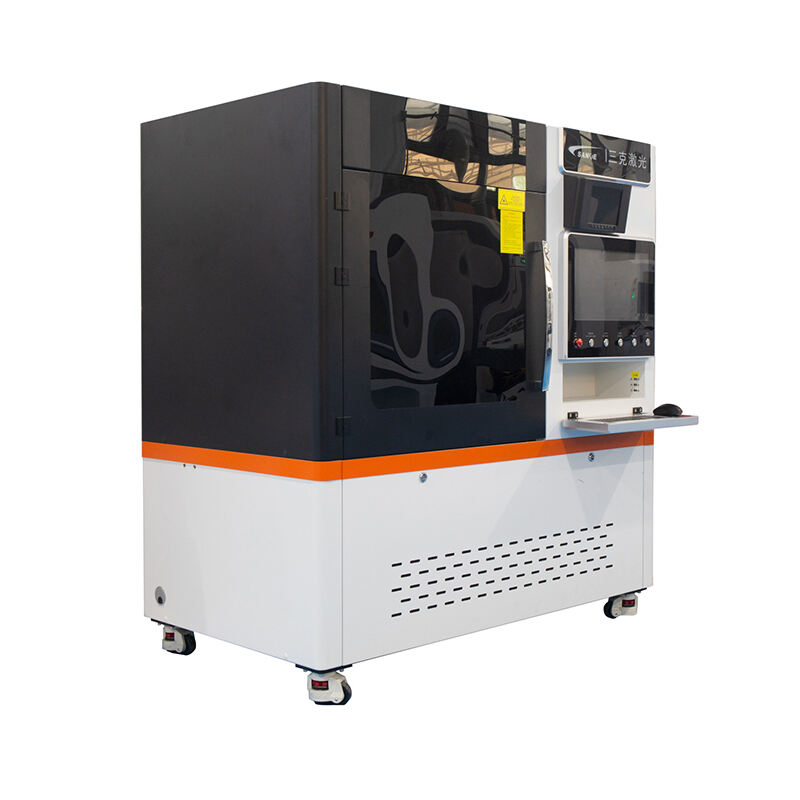Understanding the Economic Impact of Laser Cutting Technology in Modern Manufacturing
The manufacturing industry has witnessed a revolutionary transformation with the advent of advanced laser cutting machine technology. As businesses strive to optimize their production processes, the efficiency of these sophisticated systems plays a pivotal role in determining operational costs and overall profitability. Modern laser cutting machines represent a significant investment, but their impact on production economics extends far beyond the initial purchase price.
The relationship between machine efficiency and production costs is multifaceted, encompassing various factors from energy consumption to material utilization. When manufacturers employ a laser cutting machine for processing superhard materials, even minor variations in operational efficiency can result in substantial financial implications across the entire production chain.
Core Operational Factors Influencing Production Costs
Energy Consumption and Power Management
The energy efficiency of a laser cutting machine directly impacts operational expenses. Modern systems incorporate advanced power management features that optimize energy usage during both active cutting and standby modes. High-efficiency laser resonators and intelligent power cycling mechanisms can reduce electricity consumption by up to 30% compared to older models.
The implementation of energy-efficient cooling systems and power-saving modes further enhances cost reduction potential. When processing superhard materials, the laser cutting machine must maintain consistent power output while minimizing energy waste, striking a crucial balance between performance and consumption.
Processing Speed and Throughput Optimization
The cutting speed of a laser cutting machine significantly affects production capacity and cost per part. Advanced systems equipped with high-powered lasers and optimized beam delivery systems can achieve faster cutting speeds while maintaining precision. This increased throughput directly translates to lower per-unit production costs.
Manufacturing facilities that optimize their laser cutting machine parameters for specific materials can achieve remarkable improvements in processing efficiency. For instance, proper speed optimization can reduce cutting time by up to 25% while maintaining superior edge quality on superhard materials.
Material Handling and Waste Reduction Impact
Automated Material Management Systems
Modern laser cutting machine installations often feature sophisticated material handling automation. These systems minimize downtime between processing cycles and reduce labor costs associated with loading and unloading. Automated sheet metal storage and retrieval systems can operate continuously, maximizing the productive hours of the laser cutting equipment.
Integration of smart material handling solutions can lead to labor cost reductions of up to 40% while simultaneously improving workplace safety and reducing material damage risks. These systems work in harmony with the laser cutting machine to ensure optimal material flow and production scheduling.
Scrap Reduction and Material Optimization
Advanced nesting software integrated with laser cutting machine systems significantly improves material utilization. By optimizing part layout and cutting sequences, manufacturers can minimize waste and maximize the number of components produced from each sheet of material. This optimization becomes particularly crucial when processing expensive superhard materials.
Efficient nesting algorithms can improve material utilization by up to 15%, directly reducing raw material costs. Furthermore, intelligent cutting strategies minimize the generation of unusable scraps, contributing to sustainable manufacturing practices and cost reduction.
Maintenance and Operational Reliability
Preventive Maintenance Strategies
The reliability of a laser cutting machine directly influences production costs through maintenance requirements and potential downtime. Implementation of predictive maintenance programs, enabled by IoT sensors and data analytics, helps prevent unexpected failures and optimizes service intervals.
Regular maintenance of critical components such as beam delivery systems, assist gas networks, and cooling systems ensures consistent performance and extends equipment life. This proactive approach can reduce unplanned downtime by up to 50% and lower overall maintenance costs significantly.
Component Longevity and Replacement Cycles
The durability of laser cutting machine components when processing superhard materials affects long-term operational costs. High-quality optical components and robust mechanical systems may require higher initial investment but offer extended service life and improved reliability.
Strategic management of consumable replacement schedules and the use of premium components can extend operational intervals by up to 30%, reducing both direct maintenance costs and production interruptions.
Quality Control and Process Optimization
Real-time Monitoring Systems
Advanced laser cutting machine systems incorporate sophisticated monitoring technologies that ensure consistent quality while minimizing waste. Real-time process monitoring can detect and correct cutting anomalies before they result in defective parts, reducing material waste and rework costs.
Implementation of quality monitoring systems can reduce defect rates by up to 35% and virtually eliminate the need for post-process inspection in many applications. This improvement in first-pass yield has a direct positive impact on production economics.
Process Parameter Optimization
Continuous refinement of cutting parameters ensures optimal performance when processing different materials. Modern laser cutting machine controllers can automatically adjust parameters based on material properties and thickness, maintaining optimal cutting conditions throughout production runs.
Proper parameter optimization can extend consumable life by up to 25% while ensuring consistent cut quality. This optimization reduces both direct operational costs and quality-related expenses.
Frequently Asked Questions
How does laser power affect operating costs in superhard material processing?
Higher laser power generally results in increased energy consumption but can significantly reduce processing time for superhard materials. The optimal balance depends on material thickness and production volume, with higher power systems often proving more cost-effective for high-volume operations despite increased energy costs.
What role does assist gas selection play in cutting efficiency?
Assist gas choice significantly impacts both cutting speed and operating costs. While nitrogen typically provides better edge quality for certain materials, oxygen can offer faster cutting speeds and lower gas costs for others. The selection should be based on material requirements and quality specifications.
How can manufacturers optimize maintenance schedules for cost efficiency?
Optimal maintenance scheduling requires balancing preventive service costs against the risk of unexpected downtime. Implementation of condition-based monitoring systems helps predict maintenance needs accurately, reducing unnecessary service interventions while preventing costly failures.
 EN
EN
 AR
AR
 FR
FR
 DE
DE
 JA
JA
 KO
KO
 RU
RU
 ES
ES


